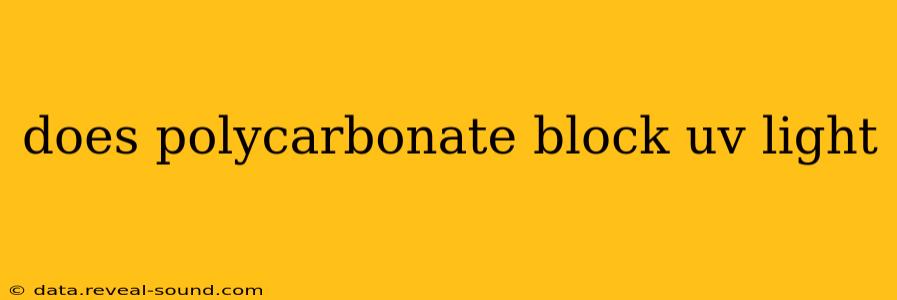Does Polycarbonate Block UV Light? A Comprehensive Guide
Polycarbonate is a popular material known for its strength, durability, and lightweight nature. But one of its key selling points, particularly for applications like eyewear and greenhouse glazing, is its ability to block ultraviolet (UV) light. So, the short answer is: yes, polycarbonate does block UV light, but the extent of this protection varies depending on several factors.
Let's delve deeper into the specifics of how polycarbonate blocks UV and what factors influence its effectiveness.
What is UV Light and Why is Blocking it Important?
Before we explore polycarbonate's UV-blocking capabilities, it's essential to understand what UV light is and why blocking it is crucial. Ultraviolet (UV) light is a type of electromagnetic radiation from the sun, invisible to the human eye. There are three types: UVA, UVB, and UVC. While the Earth's ozone layer filters out most UVC, UVA and UVB rays reach the surface and can cause damage. Prolonged exposure to these rays can lead to:
- Sunburns: UVB rays are primarily responsible for sunburn.
- Premature aging: UVA rays penetrate deeper into the skin, causing wrinkles, age spots, and other signs of aging.
- Eye damage: Both UVA and UVB rays can damage the eyes, leading to cataracts and other eye problems.
- Skin cancer: UV radiation is a major cause of skin cancer.
Therefore, protection from UV light is vital for maintaining health and preventing long-term damage.
How Effectively Does Polycarbonate Block UV Light?
Polycarbonate's inherent molecular structure offers significant UV protection. However, the level of protection varies depending on several factors:
- Thickness: Thicker polycarbonate sheets generally provide better UV protection than thinner ones. The more material the light has to pass through, the less UV radiation gets transmitted.
- Additives: Many polycarbonate manufacturers add UV absorbers to their products, significantly enhancing their UV-blocking capabilities. These additives are usually incorporated during the manufacturing process. Look for polycarbonate specifically advertised as "UV-resistant" or with a specified UV transmission percentage.
- Wavelength: Polycarbonate blocks a significant portion of UVB and a good amount of UVA radiation, but its effectiveness varies across the entire UV spectrum. Some wavelengths are blocked more effectively than others.
- Age and Degradation: Over time, exposure to sunlight and other environmental factors can degrade polycarbonate, reducing its UV-blocking effectiveness. This is particularly true for polycarbonate not treated with UV stabilizers.
What are the Applications of UV-Blocking Polycarbonate?
The UV-blocking properties of polycarbonate make it ideal for a wide range of applications, including:
- Safety eyewear: Polycarbonate lenses are commonly used in safety glasses, goggles, and face shields due to their impact resistance and UV protection.
- Sunglasses: Many sunglasses utilize polycarbonate lenses because of their lightweight nature and UV-blocking properties.
- Greenhouse glazing: Polycarbonate sheets are often used in greenhouses because they allow visible light to pass through while effectively filtering out harmful UV rays.
- Automotive applications: Polycarbonate is used in car windows and other automotive components where UV protection is important.
Does Polycarbonate Block 100% of UV Light?
No, polycarbonate typically does not block 100% of UV light. While it offers excellent protection, some UV radiation can still pass through, especially with thinner sheets or those without added UV absorbers. The level of UV transmission is usually expressed as a percentage. For example, a sheet that blocks 99% of UV light has a 1% UV transmission rate.
How Can I Determine the UV Protection of Polycarbonate?
To determine the UV protection offered by a specific polycarbonate product, look for information provided by the manufacturer. This information might be found on the product packaging, data sheets, or the manufacturer's website. The UV transmission rate (percentage of UV light that passes through) is a key indicator of its effectiveness.
In conclusion, polycarbonate effectively blocks UV light, contributing to its versatility and wide range of applications. However, understanding the factors influencing its UV-blocking capabilities—thickness, additives, age, and wavelength—is essential for selecting the appropriate polycarbonate for specific needs. Always check the manufacturer’s specifications for the most accurate and reliable information.
